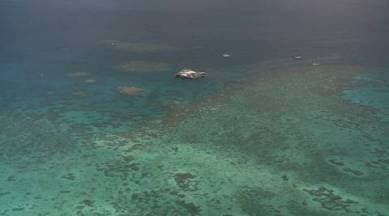Stay updated with the latest - Click here to follow us on Instagram
Work on to rid sea of ‘ghost nets’, save marine life
The nets that have been discarded or lost at sea during fishing operations are referred to as ghost nets.

On the southern coast of the state, efforts are being made to tackle an ongoing issue of “ghost nets”, which forest officials believe pose one of the biggest threats to marine life in Maharashtra. The nets that have been discarded or lost at sea during fishing operations are referred to as ghost nets. In the operations that began in March 2016, officials have found abandoned nets spread over 150 square kilometres.
Watch What Else Is Making News:
“They are called ghost nets because they are ghost fishing, they are floating around catching everything and killing a lot of sea life,” said Sarang Kulkarni, marine biologist and chief instructor at The Indian Institute of Scuba Diving and Aquatic Sports. The operations were carried out 6 km into the sea from the coasts of Malvan and Vengurla in Sindhudurg district.
Several sea turtles that have been listed as critically endangered by the International Union of Conservation of Nature were rescued during the operations. Nets intentionally cut off by fishermen or accidentally detached during fishing continue to drift or get entangled in stones and reefs in the bottom of the sea. Since most of these nets are made of nylon and derivatives, these do not degrade.
“Such ghost nets continue to trap animals, entangle and kill marine life, smother habitat, and even act as a hazard to navigation. The nets capture the fish, usually crabs,” said a forest official, adding that there was no record of the number of species saved or rescued by the divers.